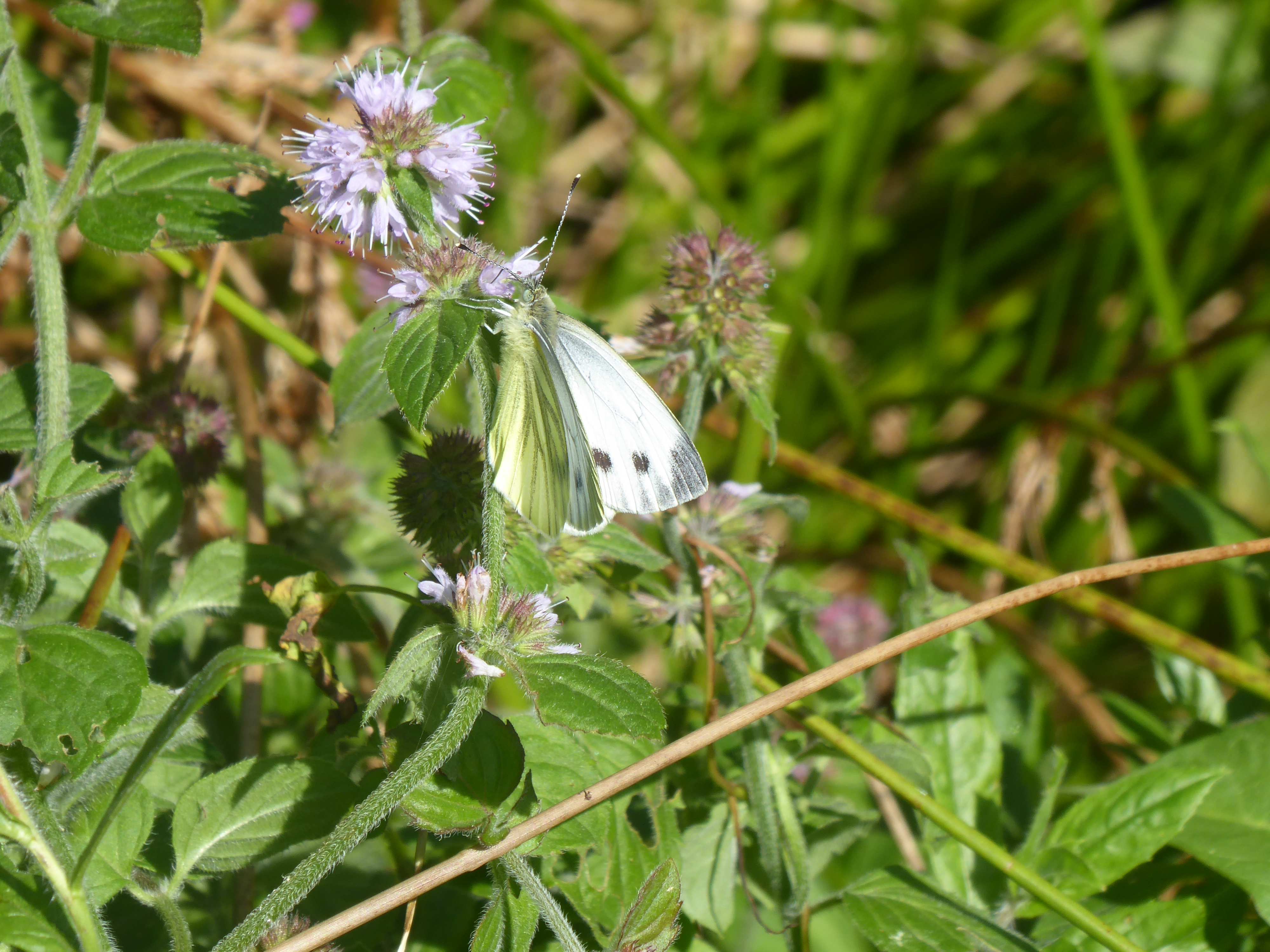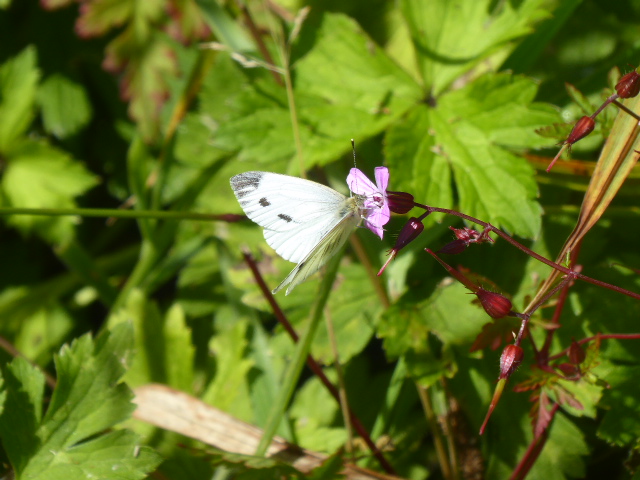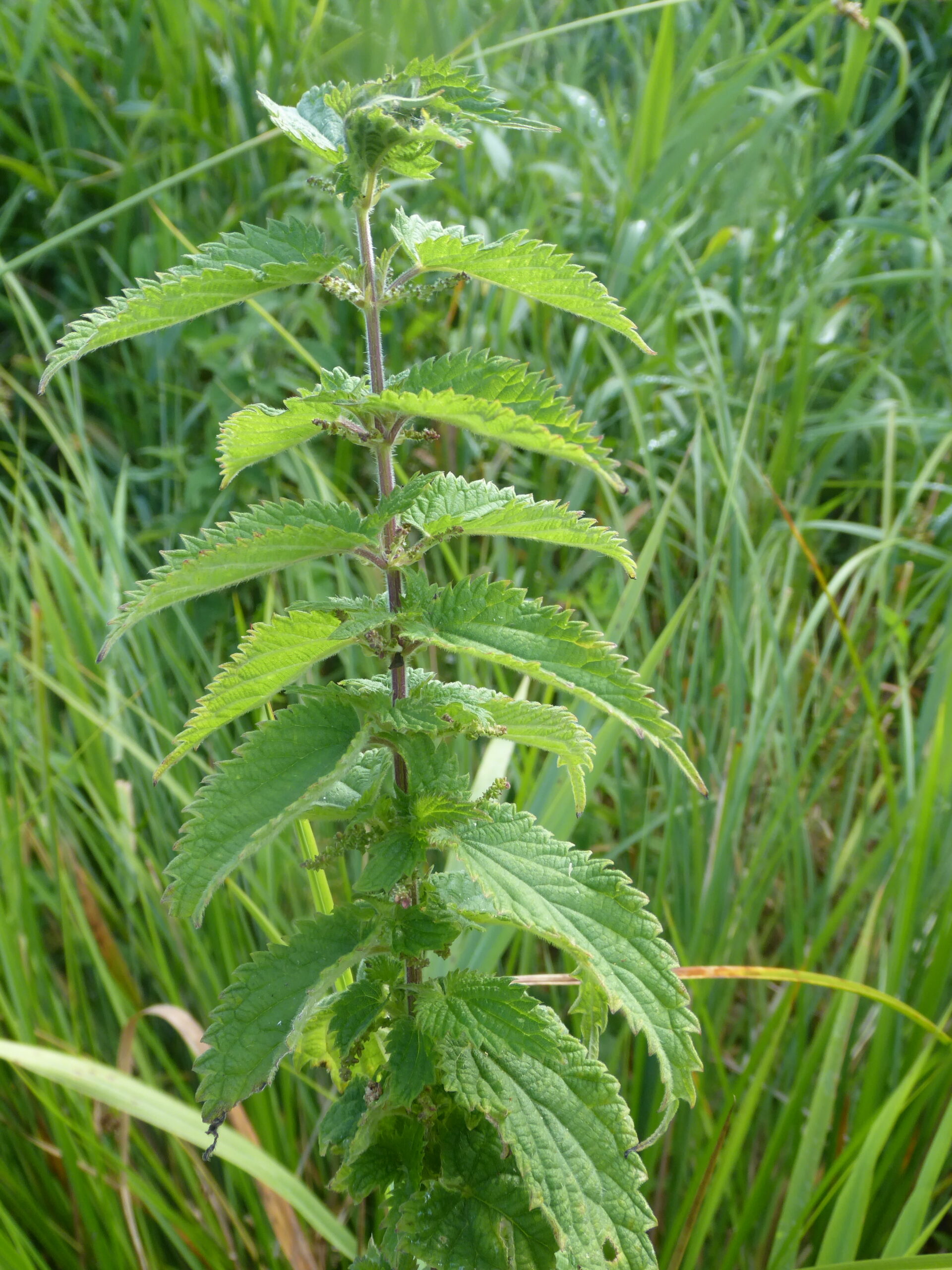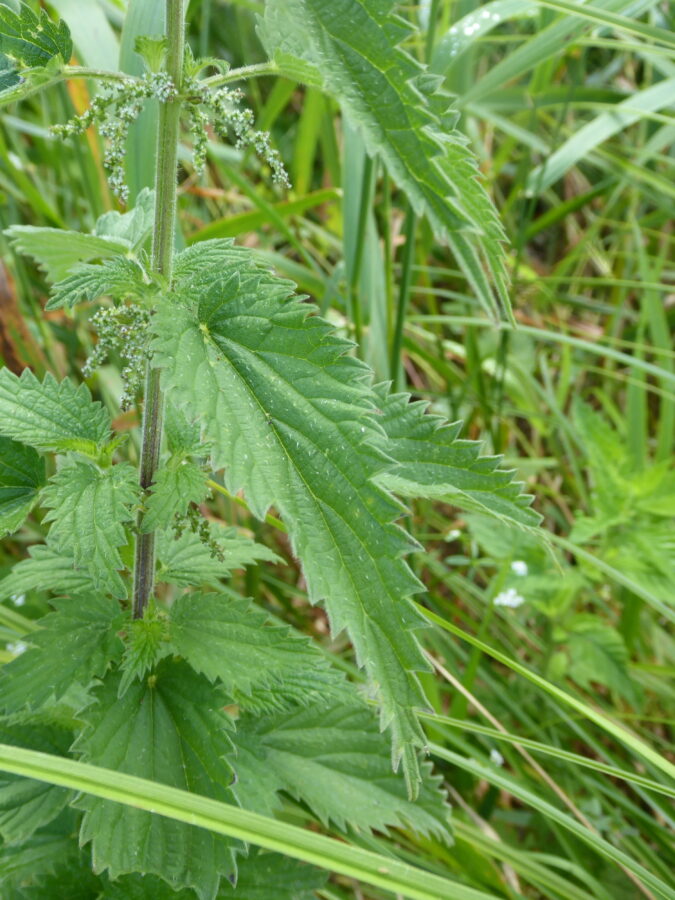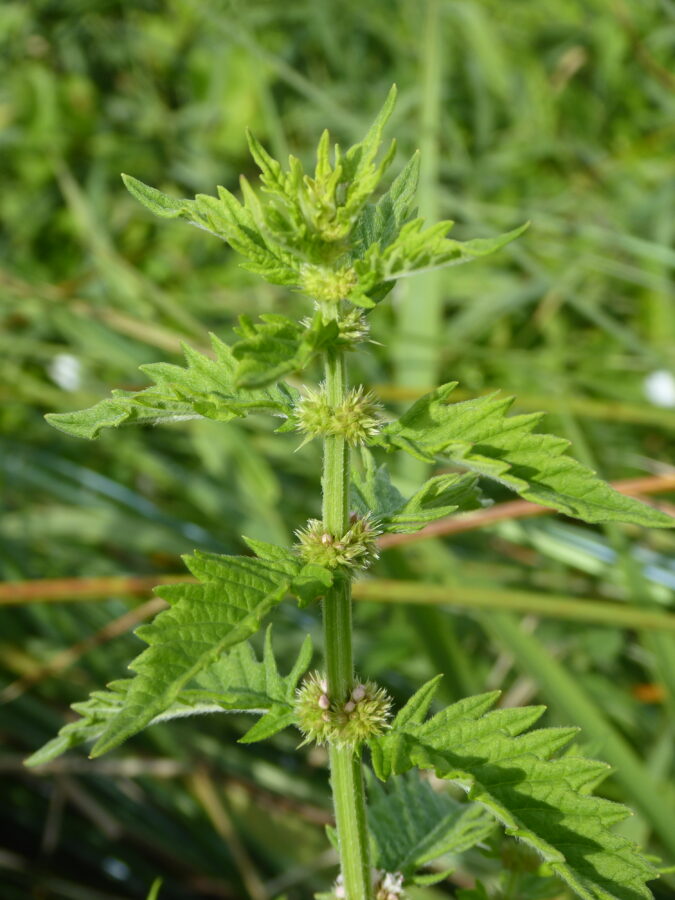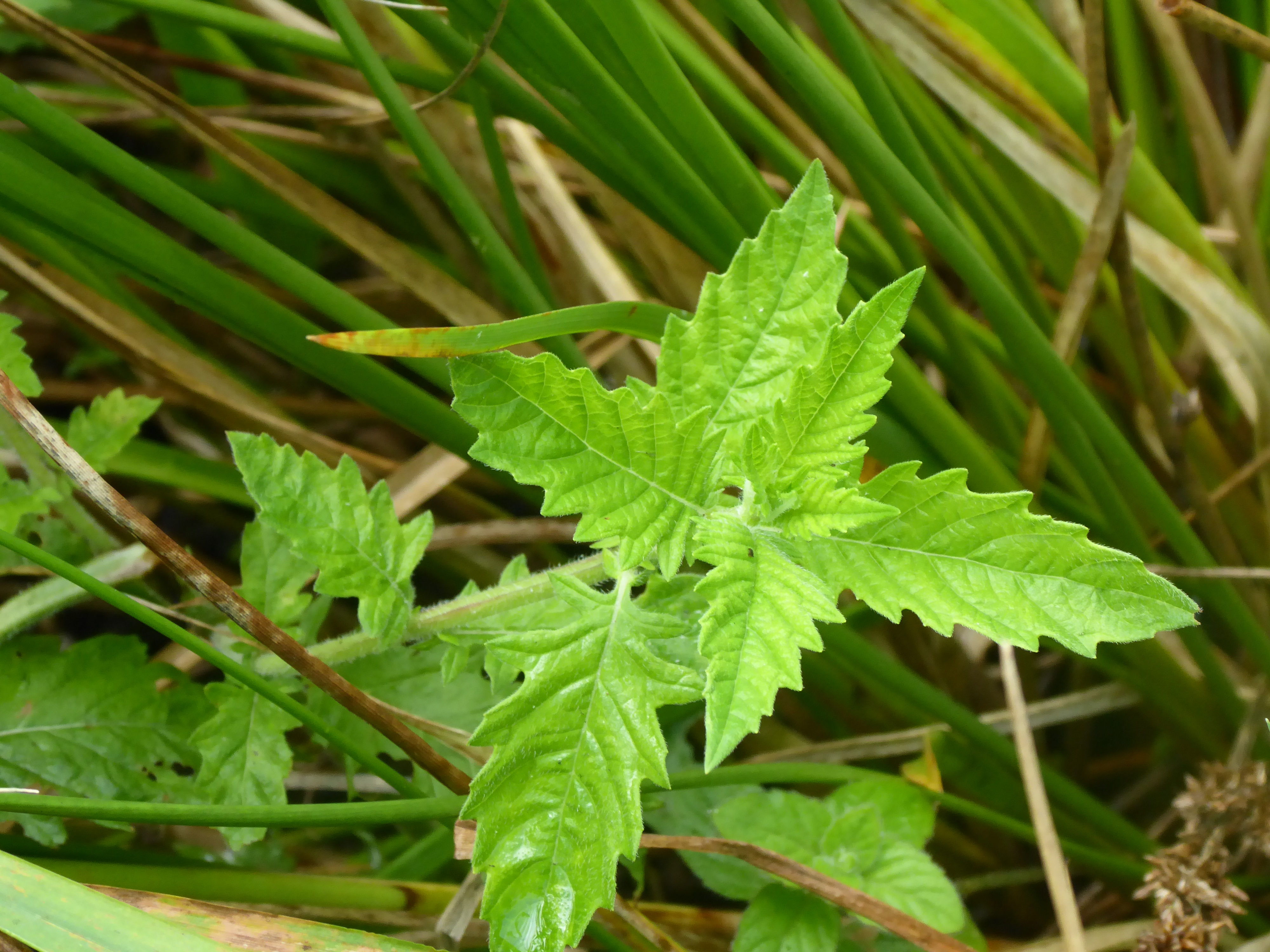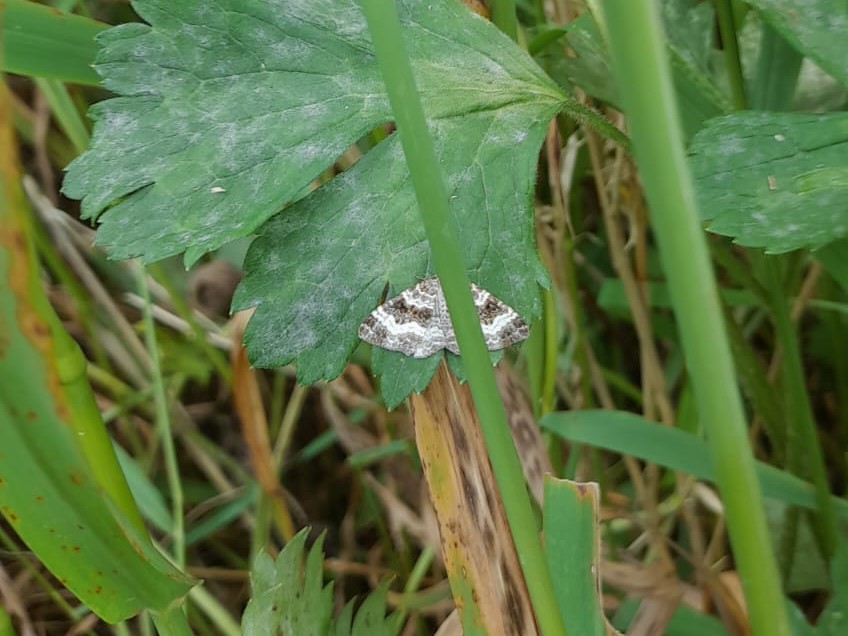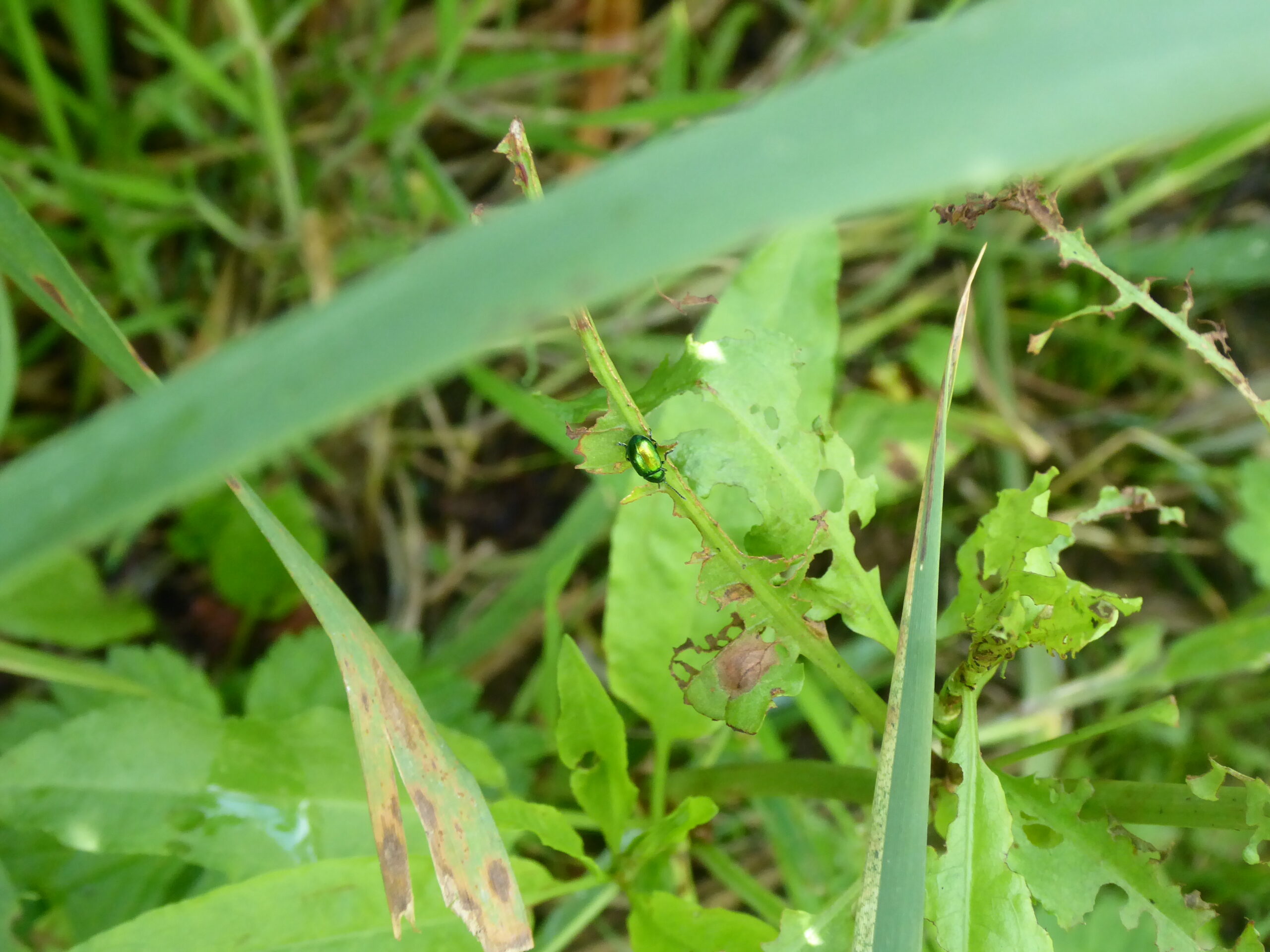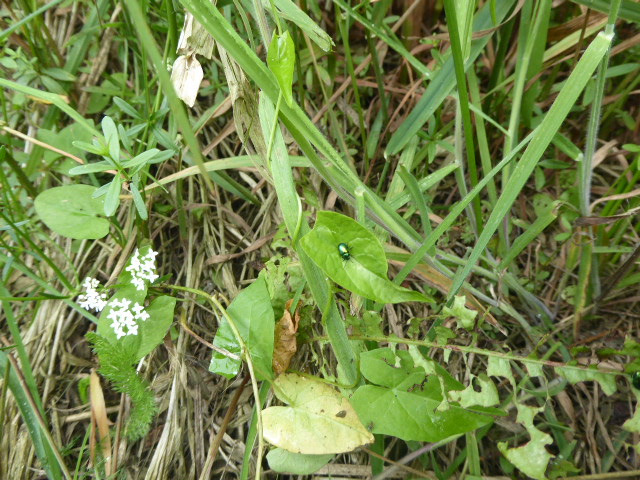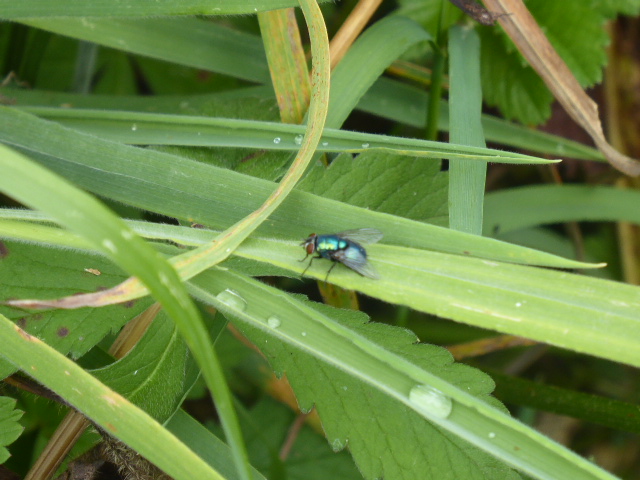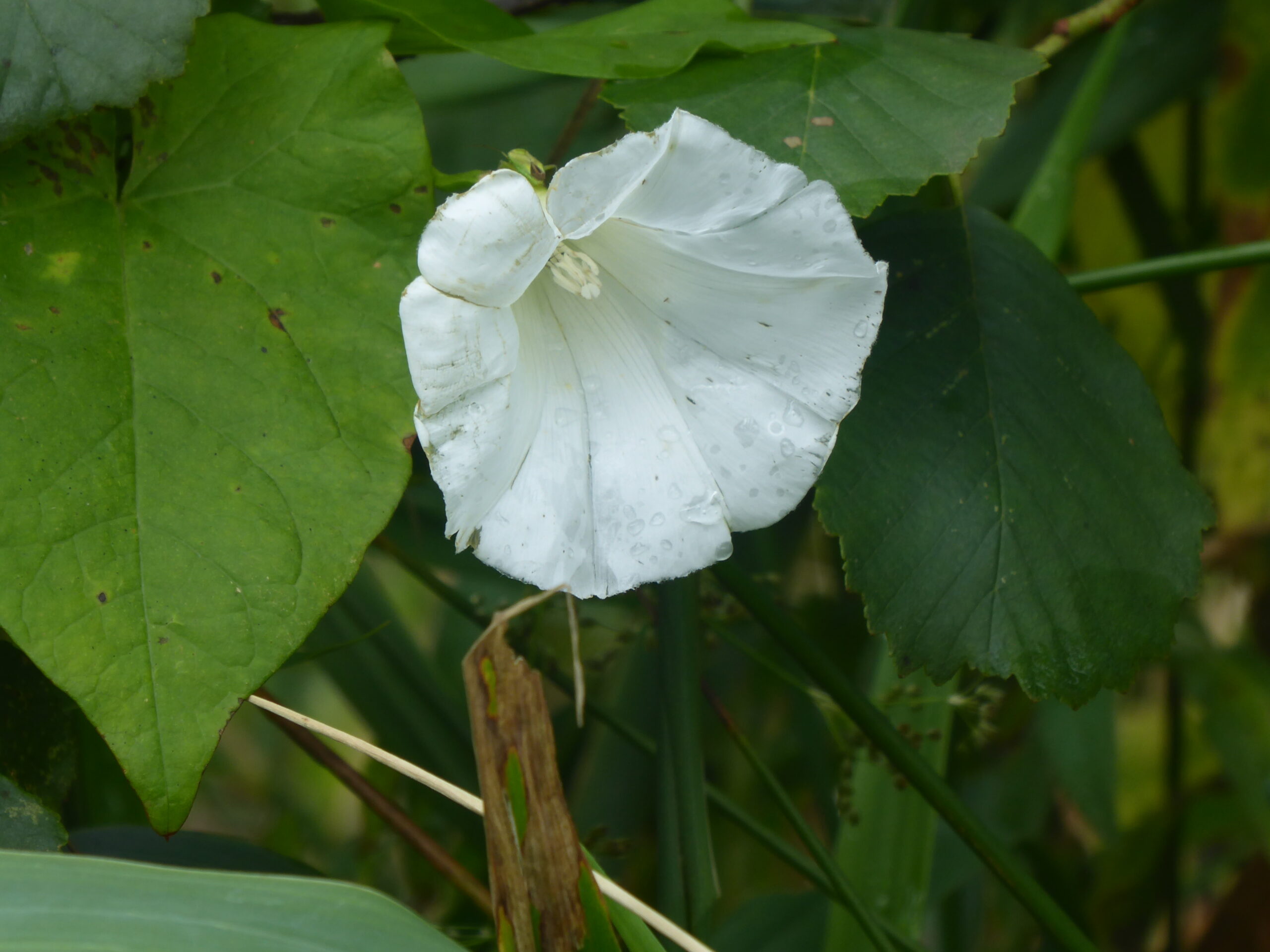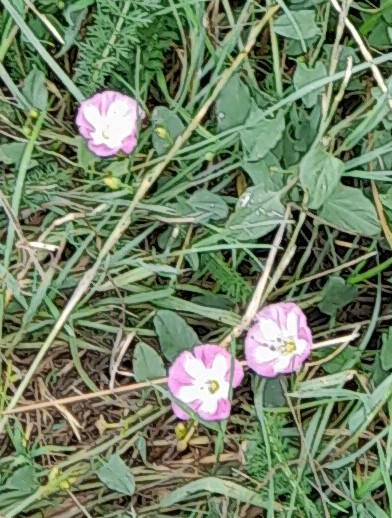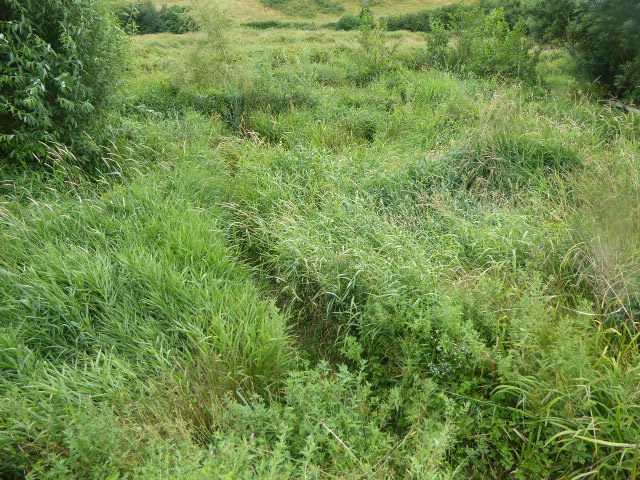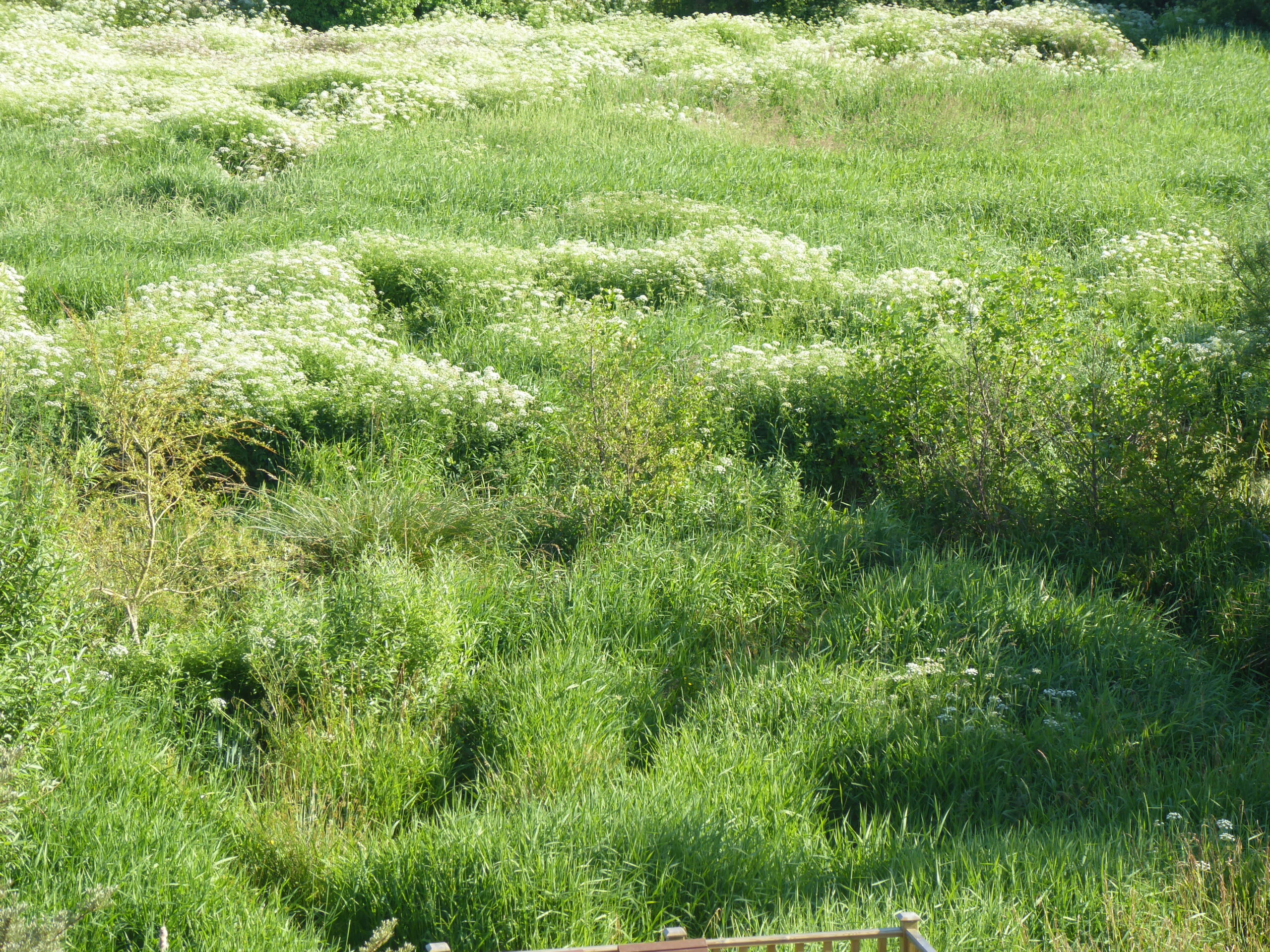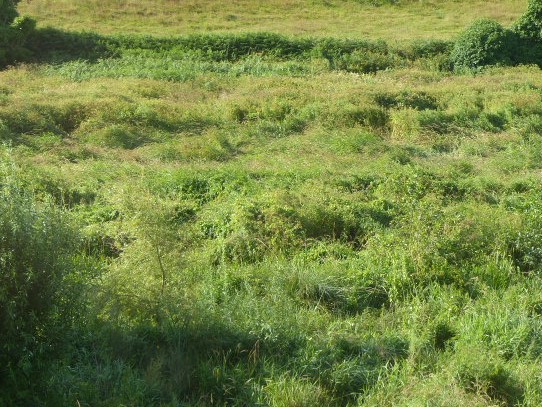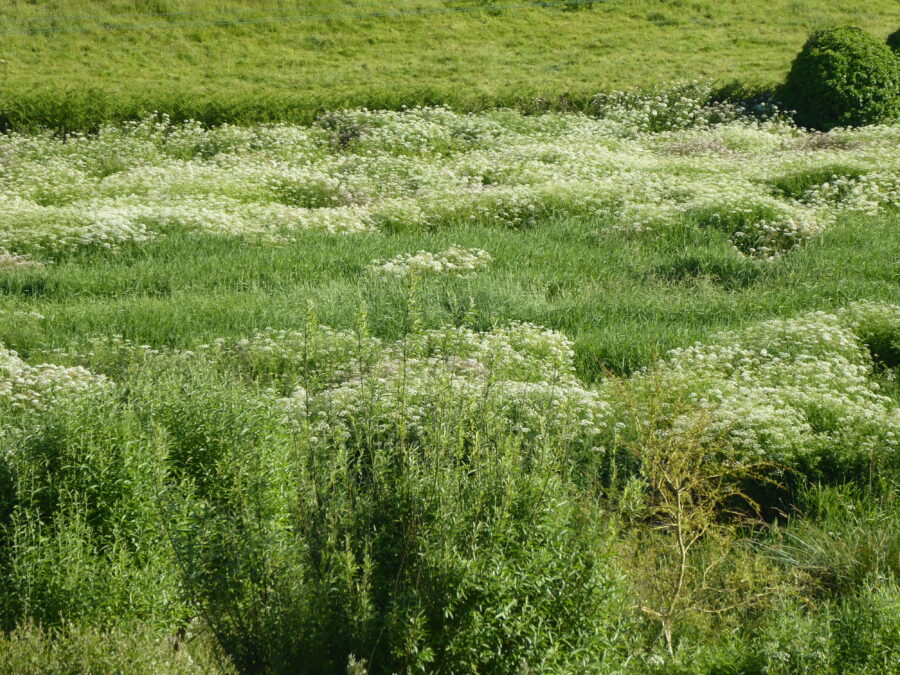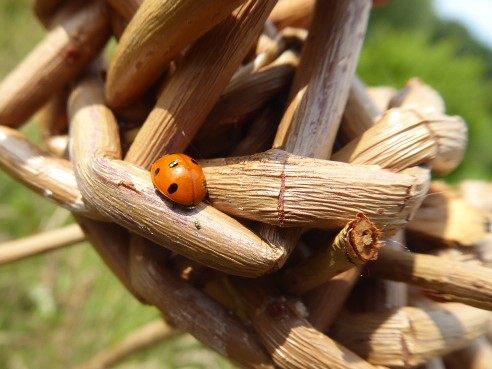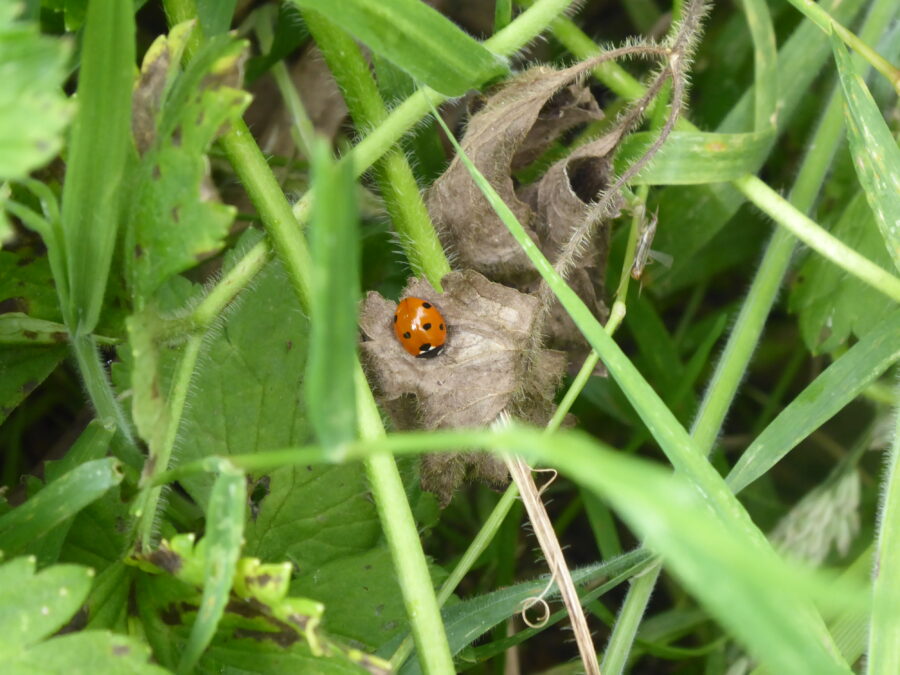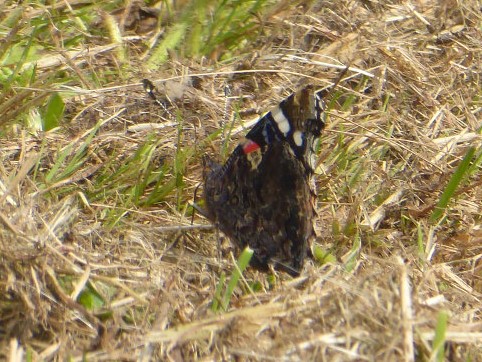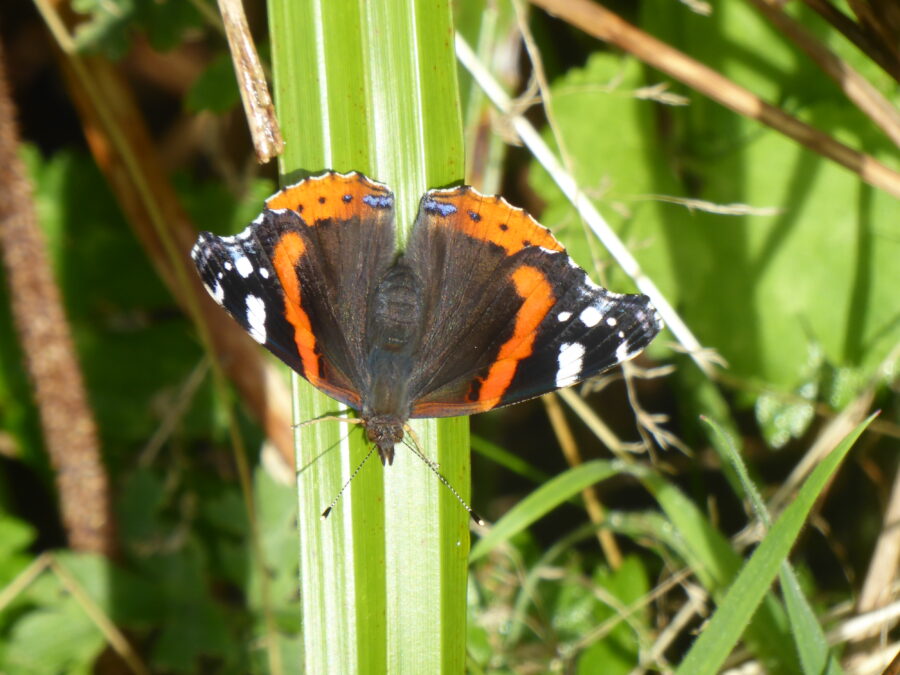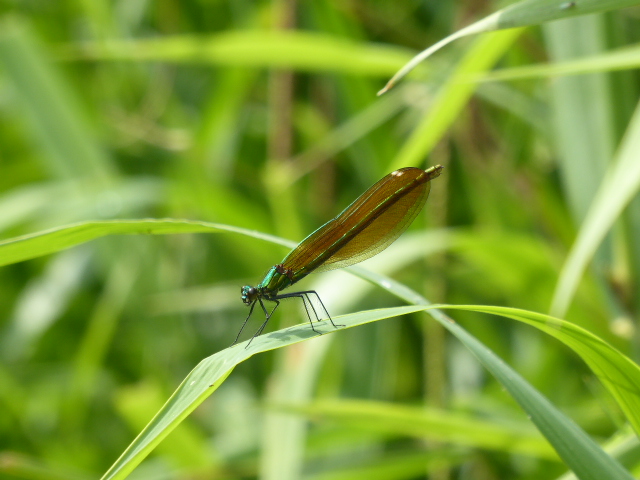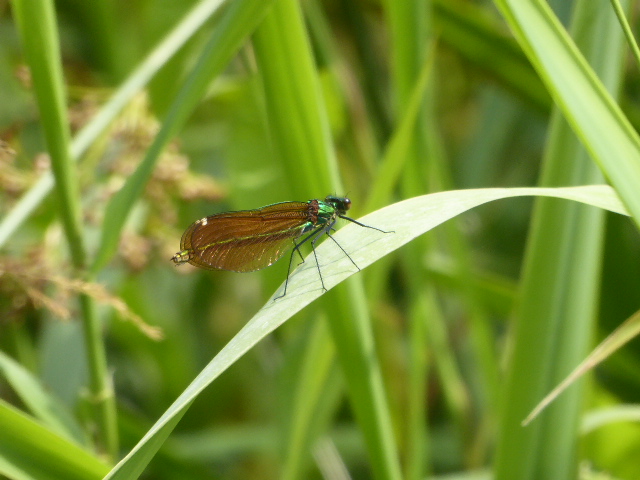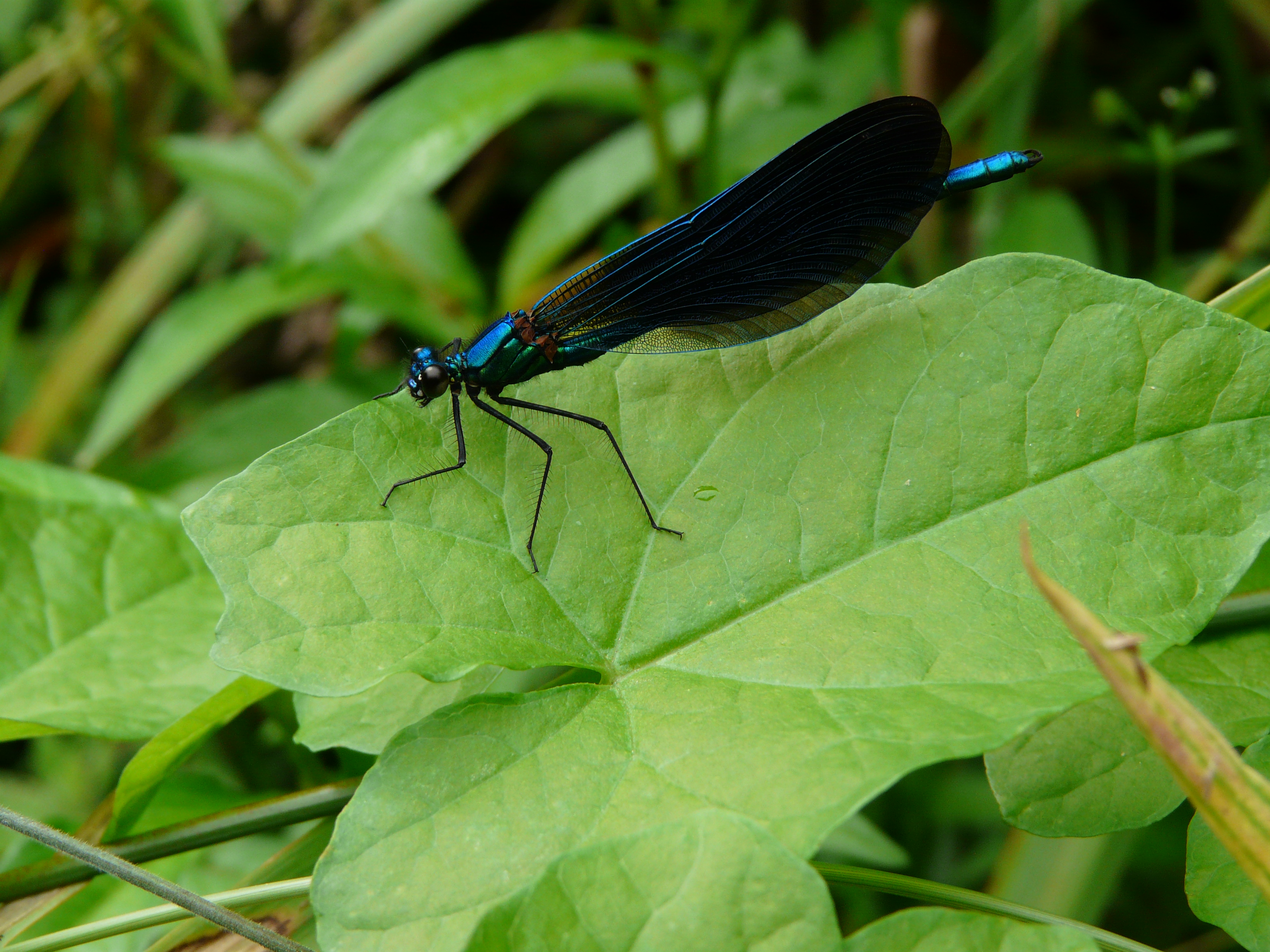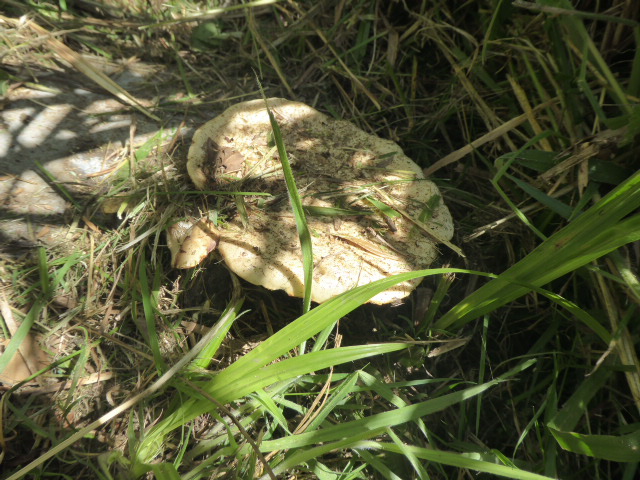So far, I have managed to photograph the Red Admiral, Peacock, and Green-veined White butterflies in the watermeadow. I have also seen brown and blue butterflies, but they flew around too much to be photographed and formally identified.
There are four white butterflies to choose from. The Orange Tip can be discounted from our investigations, but I was trying to work out whether it was the Large White (Cabbage White), Small White or Green-veined White.
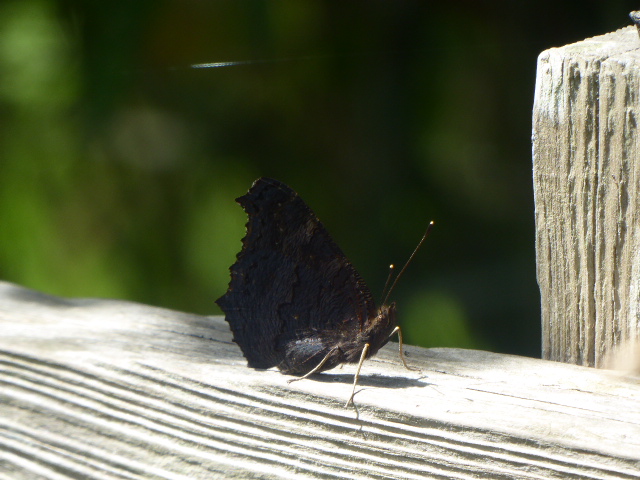
This is not what the Peacock usually looks like, but it is resting on the fence, so you can only see the back of its wings. It flew away before I could focus on its outstretched wings.
The black tips are the key. They are not dark black across the edges of the wings, like the Large White. So that leaves the Small White or the Green-veined White. They are a bit patchy across the edges, which points to the Green-veined white. The veins are fairly noticeable, though I didn’t think that was conclusive by itself. However, you can see a yellow and black stripy look to the back of the wings. This marks it out as a Green-veined White, as the Small White has plain creamy wing-backs. The females have two black spots.
The Green-veined White is feeding from a Herb Robert flower. The Green-veined White is feeding from a Herb Robert flower. It also likes the Cuckoo Flower and prefers to live in damp areas.
Peacock update 17/07/23: I managed to take a picture of the glorious Peacock butterfly.
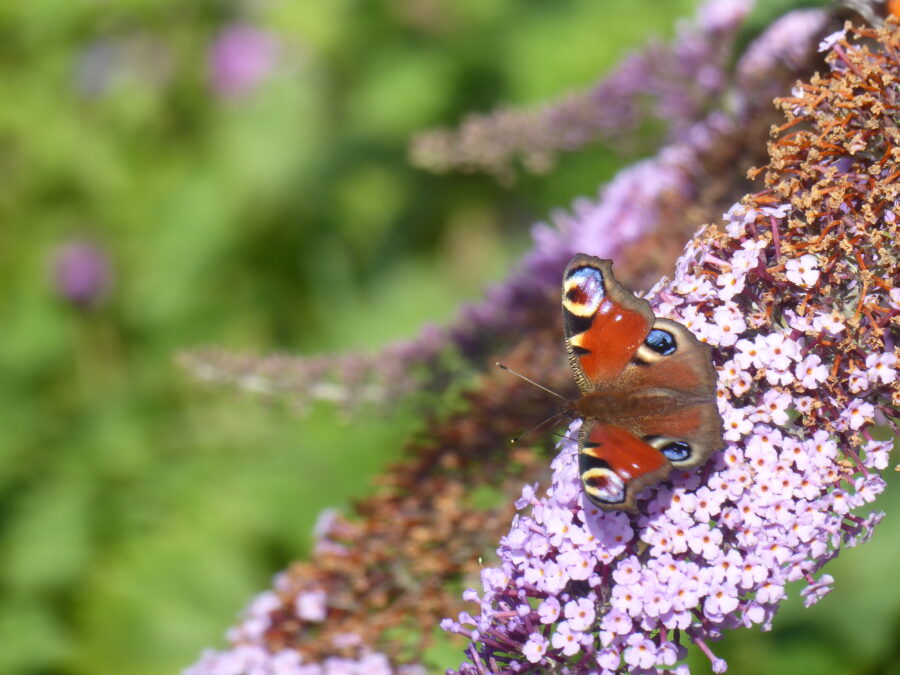
Green-veined White update 05/09/23: on a day when everything flew, hopped or scuttled away from me, this charming butterfly proved without a doubt that green-veined whites are still visiting our watermeadow!
